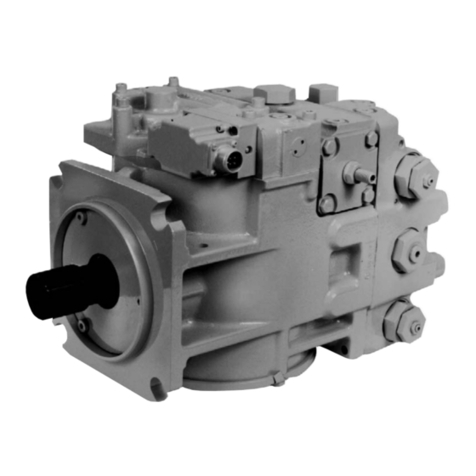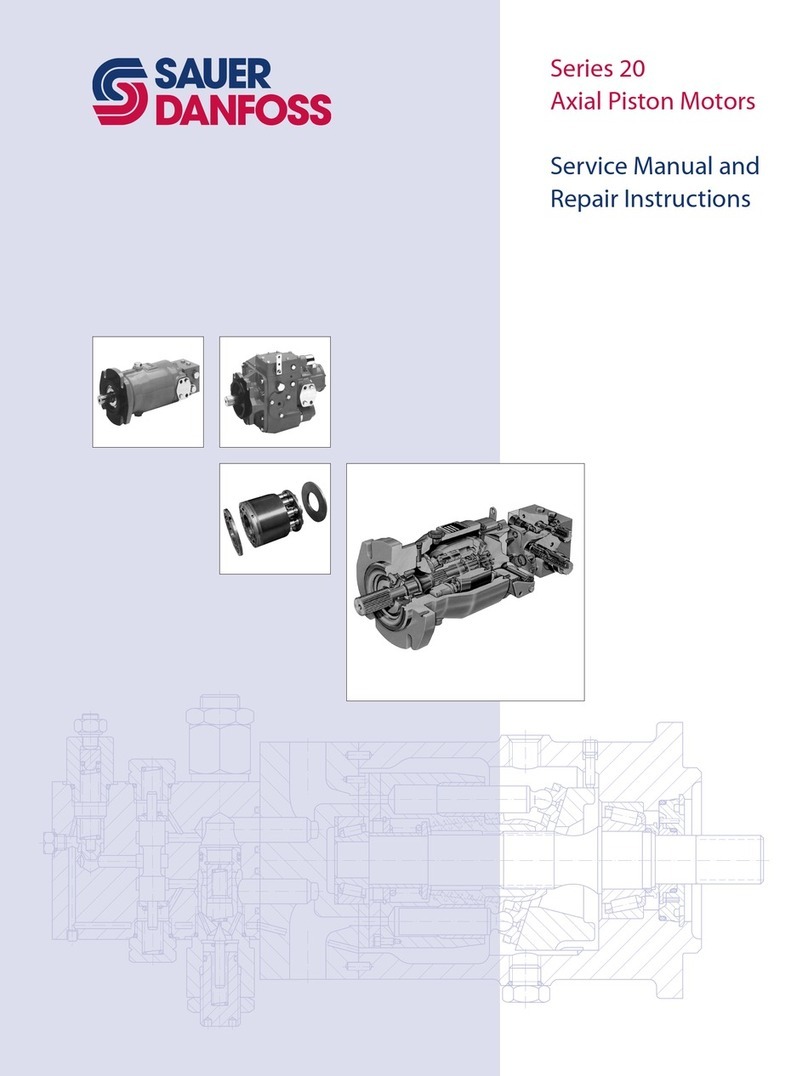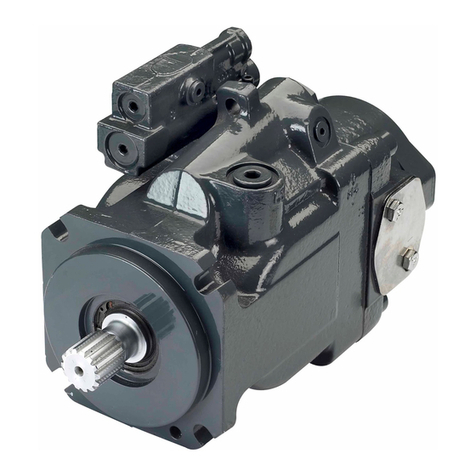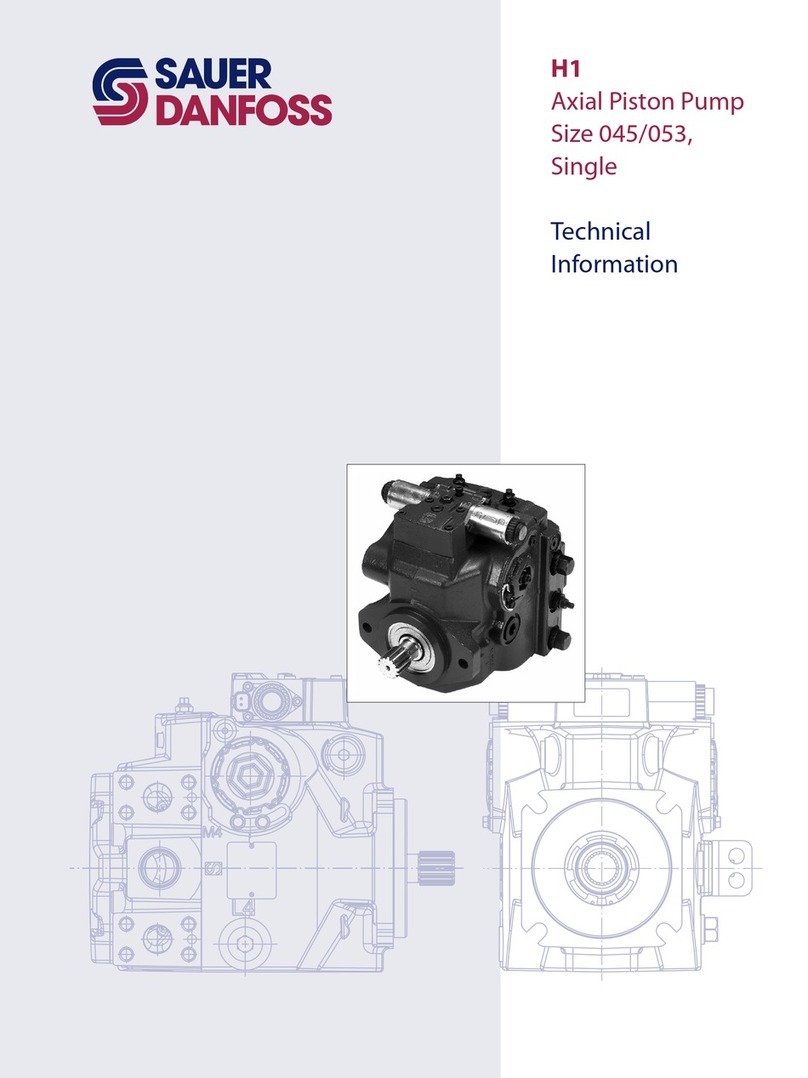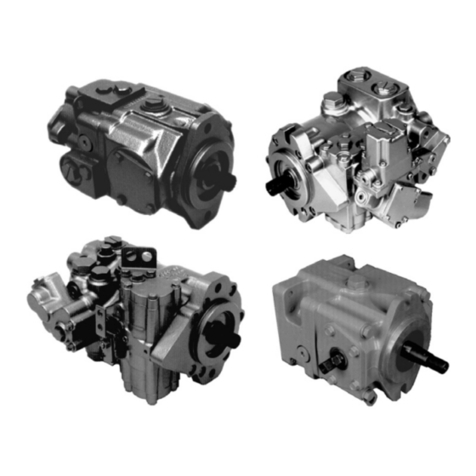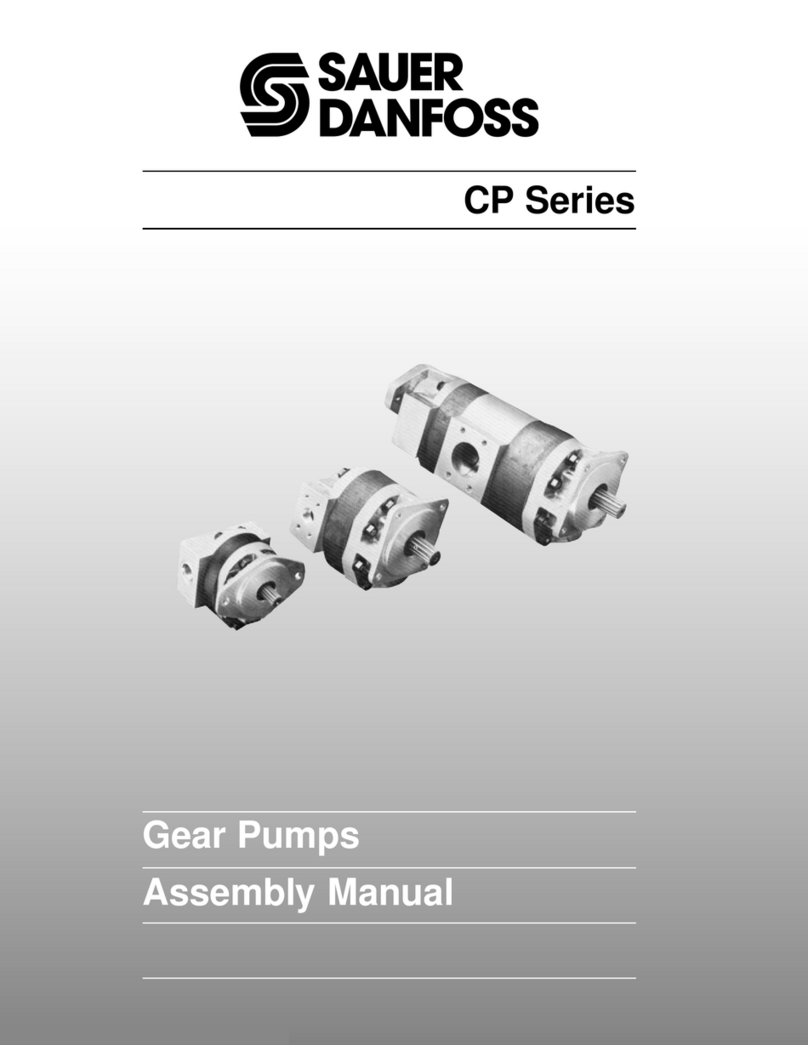
GROUP 3025HYDRAULIC PUMP
3025--9A, Page 7
4 START---UP PROCEDURE
The start--up procedure must be followed when starting
up a new Series 51 installation or when restarting an
installation in which either the pump or motor has been
removed from the system.
WARNING
It is recommended that the auger be
disconnected from the torque hubs
while performing the start--up pro-
cedure to prevent possible injury to
the technician or bystanders. If the
auger has already been installed in
the housing before start--up of the
Series 51 hydraulic motor is at-
tempted, disconnect the auger from
thetorquehubs,supporttheauger
with a lift fixture and remove the
spacers from each hub/auger junc-
tion. Refer to group 3001--7 High
Speed Blower.
Fill the vehicle hydraulic reservoir with the
recommended hydraulic fluid passing the fluid through a
10 micron filter. Disconnect the outlet line from the
hydraulic pump at the reservoir and fill this line and the
inlet line to the Series 51 motor with hydraulic fluid.
Fill the pump and motor housing with clean hydraulic
fluid by pouring filtered oil into the upper case drain port.
Install a 0 to 60 bar or 0 -- 1000 psi pressure gauge in the
charge pressure gauge port (M1 or M2, refer to Fig. 3) to
monitor the charge pressure during start--up.
The electrical connector should be disconnected at the
pump control during initial start--up. This will allow the
pump to remain in the neutral position.
Slowly rotate the torque hub by hand, or “jog” the pump
until charge pressure starts to rise. Start the Series 51
pump and run at the lowest possible RPM until charge
pressure is established. Bleed excess air from the high
pressure lines through the high pressure gauge ports.
Once charge pressure is established, increase speed to
normal operating RPM. Note the charge pressure. If
charge pressure is incorrect, shut down and determine
cause for improper pressure.
Shut down the blower engine and reconnect electrical
connector at electrohydraulic control. Start the Series
51 pump, checking to be certain pump remains in
neutral. With prime mover at normal operating speed,
slowly check for forward and reverse machine
operation.
Charge pressure should be maintained during forward
or reverse operation. Continue to cycle slowly between
forward and reverse for at least five minutes. Shut down
the pump, remove gauges and plug ports. Check
hydraulic reservoir level and add fluid if necessary.
Reconnect auger to torque hubs if removed.
5 CHANGING THE FLUID AND FILTER
The reservoir breather/air filter must be kept clean.
Clean the area around the filler cap before opening the
reservoir. The hydraulic fluid must be filtered through a
10 micron filter before it enters the reservoir.
The fluid and filter must be changed at the following
intervals:
DSystem with a breathing type reservoir --- 500 hrs
It may be necessary to change the fluid more frequently
if the fluid becomes contaminated with foreign matter
(dirt, water, grease, etc.) or if the fluid has been
operating at temperature levels greater than the
maximum recommended. Never reuse fluid.
Change the filter every time the fluid is changed, or on a
more frequent basis if the filter indicator indicates a
change is necessary.
